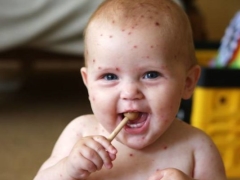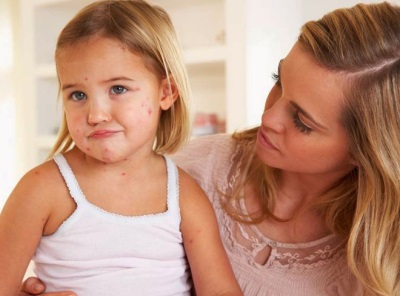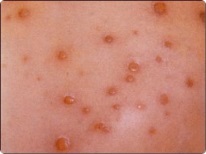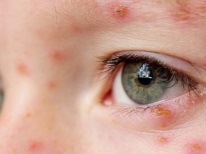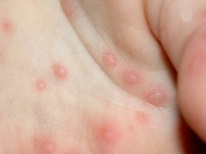How chickenpox begins: the first signs
First signs chicken pox Parents whose children talked to a child diagnosed with chickenpox are especially interested. Such information is important in a situation when quarantine for chickenpox is announced in kindergarten or school. How to recognize this infection at an early stage and how to understand that a child has chickenpox? To answer such questions, you need to know where and from what begins chickenpox in childhood.
What is chicken pox
Chickenpoxwhich traditionally parents and doctors call chickenpox, represents highly contagious infection with temperature, rash and other symptoms. Most often, this disease is detected in children aged from two to ten years. Its causative agent is one of the types of herpes viruses - Varicella Zoster virus.
Infants can also become infected and have chickenpox, but most babies under six months are protected from chickenpox by their mother's immunity. They get antibodies to chickenpox from a mother who had survived in childhood, first in utero, and then through breast milk. A child older than 6 months is no longer under the protection of maternal antibodies, therefore chicken pox in infantswho have already turned six months, is quite possible.
Watch the release of the program "Live Healthy!", In which the presenter Elena Malysheva talks about chicken pox in children:
Chickenpox is also sick and over the age of 10-12 years. At the same time, in adolescents and adults, the infection is more severe, so many parents are not against communicating with preschool children with children with chickenpox or go to a health facility for inoculation against such a disease.
In the body of a child who has suffered from chickenpox or vaccinated against Varicella Zoster virus, antibodies are formed that provide him with lifelong immunity from such an infection until the end of his life. Only in 3% of cases re-infection is possible, which is often associated with immunodeficiency.
Incubation period
This period is the time from the entry of the virus into the child’s body after infection to the first symptoms of infection. If you answer the question “how many days after contact does chickenpox manifest?”, Then most often this will be 14 days for children. Duration incubation period maybe less (from 7 days), and more (up to 21 days), but on average, the onset of chickenpox is noted two weeks after the first contact with the virus.
The child becomes a source of transmission of the virus to other people at the end of the incubation period - approximately 24 hours before the first symptoms. Besides, get infected A child who has chickenpox is possible during the entire period of rashes and within five days after the last bubbles appear on the baby’s skin. Transmission of the pathogen occurs through airborne droplets.
Prodromal period
Period of rash
Where the rash appears
Can it start with legs
If the child has a mild form of chicken pox, the rash will be represented by a small number of elements on the body, and temperature often remains normal.
What a rash looks like
Chicken pox rashes are represented by several kinds of elements that occur one after another. First, small pink-red spots cover the body, and after a few hours papules form in their place. So called small bumps, resembling mosquito bites.
After some time, the upper part of the epidermis in the papules exfoliates and a transparent liquid accumulates inside - this is how single-chamber vesicles arise. Around each such bubble you can see a red “rim” of inflamed skin.
As a rule, a rash on chickenpox can be quite itchy and the task of parents should be to prevent scratching, which can infect the bubbles.
When it starts to pass
Treatment
Doctor Komarovsky advises to pay special attention to the drinking regime of a sick child, as this helps to cope with any viral infection more quickly. Eating a sick baby should be gentle.
In addition, it is important to prevent the vesicles from scratching, as this causes damage to the deeper layers of the skin, with the result that traces are left after the chickenpox on the baby’s skin. For removal itch and prevent infection in the wounds of infection recommend local treatment with drugs such as Tsindol, «Calamine», Poxcline and others.
We recommend to watch the recording of the program of the famous children's doctor E. Komarovsky, which covers the topic of chicken pox in children:
